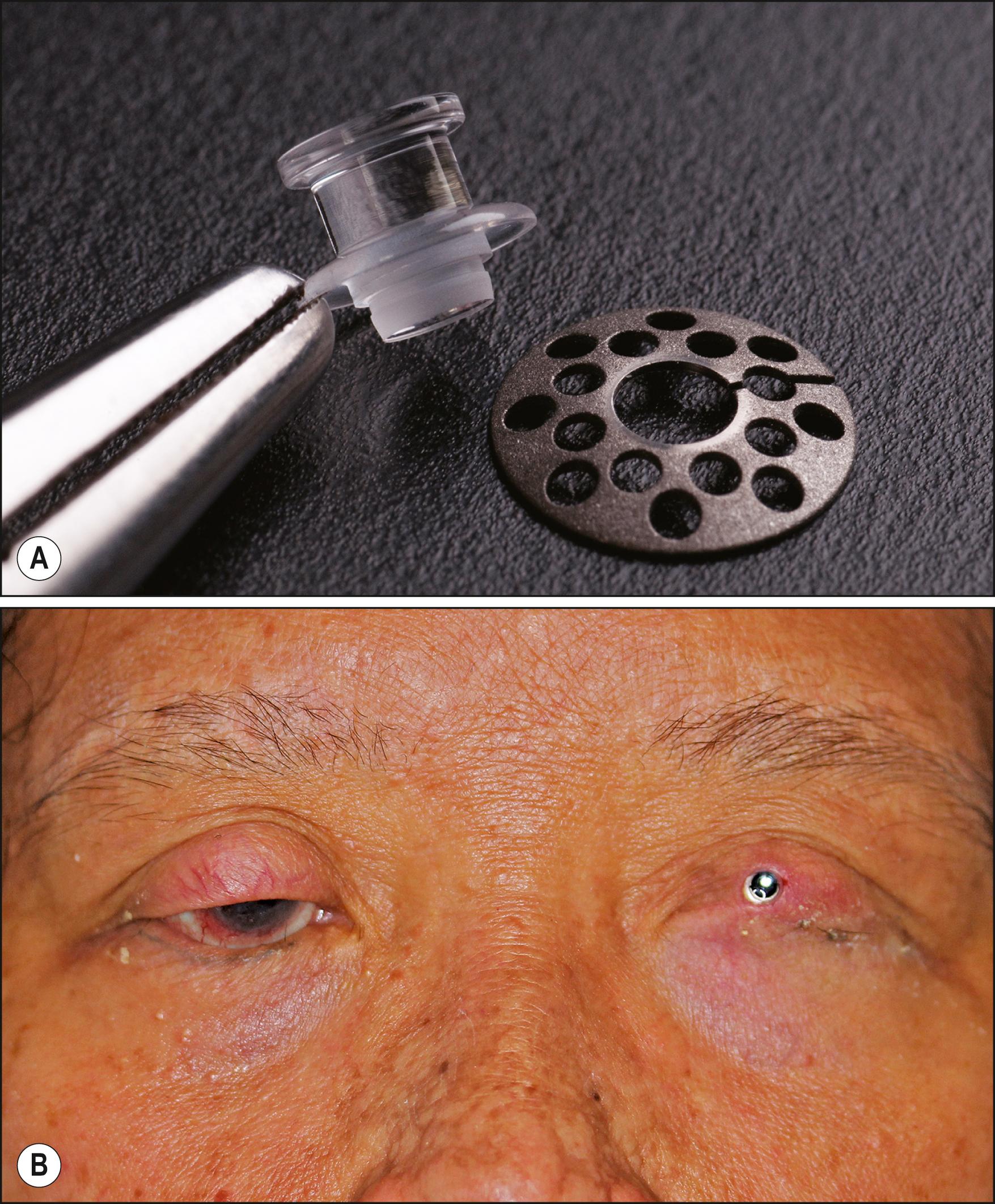Physical Address
304 North Cardinal St.
Dorchester Center, MA 02124
Boston keratoprosthesis type 2 implantation can provide sustained improvement of vision in a select, high-risk population of patients, but is associated with significant complications and requires lifelong postoperative care.
The Boston keratoprosthesis type 2 is reserved for patients with severe autoimmune ocular surface diseases, such as Stevens-Johnson syndrome, toxic epidermal necrolysis, mucous membrane pemphigoid, end-stage keratoconjunctivitis sicca, and after severe chemical burns.
Preoperative planning before Boston keratoprosthesis type 2 surgery includes extensive counseling on cosmetic appearance and frequent follow-up, lifelong ocular medications, possible immunomodulation, and surgical planning of concurrent procedures, such as glaucoma drainage device implantation and pars plana vitrectomy.
Thorough eyelid and ocular surface preparation, including removal of all mucosal epithelium and the anterior eyelid margins, is essential for proper keratoprosthesis retention.
Common complications following Boston keratoprosthesis type 2 implantation include glaucoma, retroprosthetic membrane, and skin retraction around the keratoprosthesis stem.
The Boston keratoprosthesis type 1 is the most commonly used artificial cornea, with more than 14,000 devices implanted worldwide (J. Chodosh, personal communication). The Boston keratoprosthesis type 2, a modified version of the type 1 designed to fit through closed eyelids, is used less often, with approximately 450 devices implanted, but has its own unique indications. The Boston keratoprosthesis type 2 is reserved for patients with severe autoimmune ocular surface diseases, such as Stevens-Johnson syndrome/toxic epidermal necrolysis (SJS/TEN), mucous membrane pemphigoid (MMP), end-stage keratoconjunctivitis sicca, and after severe chemical burns. Candidates for the Boston keratoprosthesis type 2 are generally patients with ocular surface xerosis and keratinization in the setting of severe aqueous tear deficiency, ankyloblepharon or symblepharon, and absence of normal eyelid function. The type 2 design is identical to that of the Boston keratoprosthesis type 1 except for an anterior extension to allow implantation through surgically closed eyelids ( Fig. 160.1A and B ).

A detailed preoperative discussion of the risks and benefits of keratoprosthesis type 2 implantation is extremely important. Patients must understand that they will need continuous and lifelong treatment following surgery, including daily antibiotics and lifelong follow-up care with a qualified corneal specialist. Similar to the Boston keratoprosthesis type 1, long-term follow-up is necessary to maintain patient compliance with medications, recognize and treat indolent infection, and diagnose new onset or worsening of preexisting glaucoma, any of which may compromise the visual gains from the surgery and/or lead to loss of the eye. Patients should also be aware that the cosmetic appearance of their eye will change drastically with the keratoprosthesis type 2 surgery. To improve cosmesis after surgery, options are limited to the use of tinted glasses, so the surgeon must thoroughly counsel patients before surgery to ensure that the patient is willing to accept their new appearance prior to proceeding with surgery.
Preoperative medical management can be essential in a subset of patients. For best outcomes in patients with underlying inflammatory and autoimmune conditions, such as SJS/TEN or MMP, ocular surface inflammation should be minimized prior to surgery. This may necessitate the use of a systemic immunosuppressive agent such as mycophenolate mofetil. Collaboration with an immunologist or rheumatologist may be needed for patients who require chronic immunosuppression.
Surgical planning also includes selection of the specific keratoprosthesis to be implanted and determination of adjunctive procedures to be performed concurrently. In phakic and aphakic patients, and when the patient is pseudophakic, but the surgeon intends to explant the lens, keratoprosthesis power is chosen based on the axial length of the eye. In phakic patients, lens extraction must be performed at the time of keratoprosthesis surgery. A pseudophakic keratoprosthesis can be used if the patient is already pseudophakic and the surgeon intends to leave the intraocular lens in place. Other procedures often performed concurrently with keratoprosthesis implantation include pars plana vitrectomy and glaucoma valve insertion.
Become a Clinical Tree membership for Full access and enjoy Unlimited articles
If you are a member. Log in here